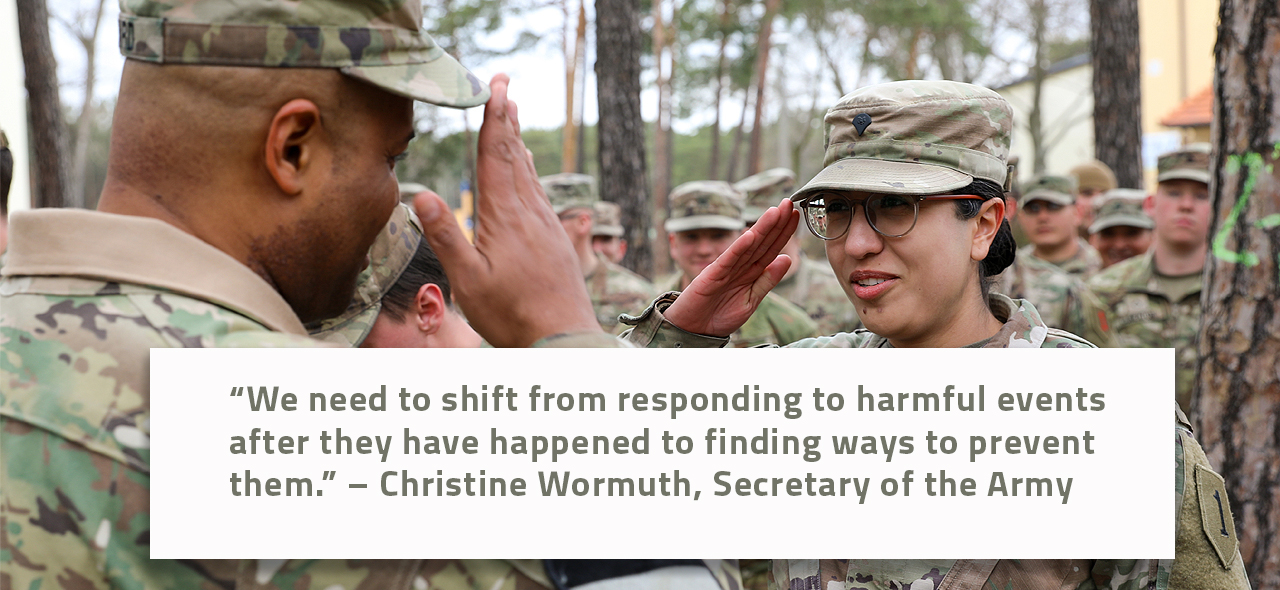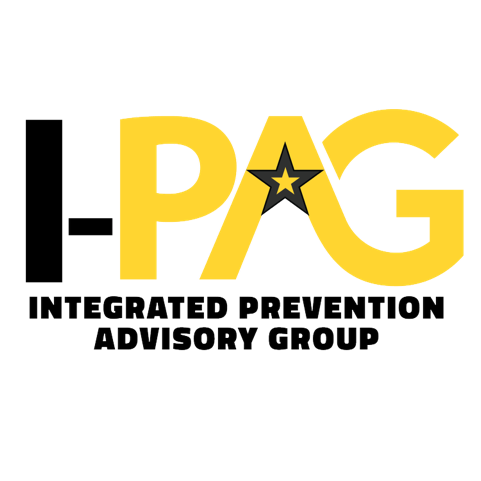
What is the Integrated Prevention Advisory Group (I-PAG)?
The Integrated Prevention Advisory Group (I-PAG) is the Army’s new primary prevention workforce. It is an additive workforce and will not replace current personnel working to prevent or respond to harmful behaviors. The I-PAG's primary objective is to build the service’s integrated prevention system. The prevention system is the backdrop against which prevention planning, implementation and evaluation take place. The I-PAG will support leader-led efforts to improve prevention activities (policies, programs and practices) intended to increase protective factors, build positive organizational environments, and prevent harmful behaviors from occurring within the Army. Using a community-oriented approach, the I-PAG will work with Army commanders to implement integrated measures across the service that reinforce the safety, health and well-being of Soldiers, Civilians and their Family members. Additionally, the I-PAG will collaborate with organizational, installation-based and nonclinical providers to advise leaders on the best evidence-based actions to pursue that may lead to increased supportive environments that encourage help-seeking behaviors.
I-PAG personnel are chosen based on specialized training and expertise in public health surveillance, social sciences, strategic planning and data analytics. This invaluable skillset enables I-PAG personnel to review preventative initiatives holistically and to evaluate outcomes. The I-PAG is expected to reach full operational capacity by the fiscal year 2027 with over 1,200 positions being created across all Army components (Active Duty, Army National Guard and U.S. Army Reserve). Presently, the Army is implementing Phase 1 hiring actions at five installations: Fort Cavazos (formerly Fort Hood), Texas; Fort Riley, Kansas; Fort Sill, Oklahoma; Schofield Barracks, Hawaii; and Camp Humphreys, South Korea.
Why I-PAG Matters
Soldiers: Everyone should feel valued, respected and heard, while allowed the opportunity to grow as an Army Soldier. Preventing harmful behaviors before they happen not only promotes holistic health and well-being, but also helps to foster an environment representative of Army Values. The Army community will incorporate values of inclusivity, dignity and respect (access, equity, rights and participation) – including seeking input from Soldiers and Family members to inform prevention plans, processes and trainings. We must all work together to foster safe organizations, installations and community areas.
Leaders: The Army’s top goal is to take care of its people first. To this end, t is critical that leaders at all levels are engaged in prevention efforts. They should work to establish and maintain a culture of trust, decency and respect—one that allows Soldiers, Army Civilians and Family members to advocate for themselves, stay secure and connect with helping resources to achieve and sustain optimal health and well-being. This will allow the Army to
- increase help-seeking behaviors,
- better prevent harmful behaviors from occurring,
- care for Soldiers and
- build healthy, positive organizational and community environments that enable mission readiness.
